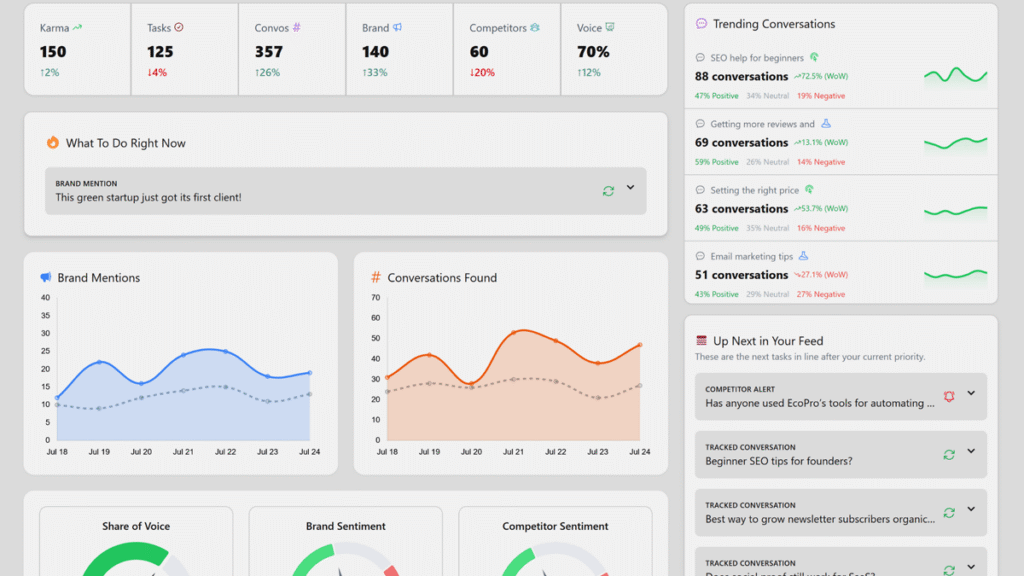If you’re hearing more about Answer Engine Optimization (AEO) lately, you’re not alone. As voice assistants, AI chatbots, and search engine features like Google’s Featured Snippets gain traction, the rules of SEO are evolving. Traditional keyword-stuffed blogs are losing ground to content that directly answers questions and does it quickly.
So what exactly is AEO, and how can you use it to stay visible in an AI-powered search landscape?
What Is Answer Engine Optimization?
Answer Engine Optimization is the practice of creating content that can be understood and delivered as a direct answer by search engines, voice assistants, and AI tools like ChatGPT, Google SGE, or Alexa. That’s what drives clicks. And clicks drive sales.
Instead of aiming to be in the top 10 search results, AEO is about becoming the first and best answer. This includes:
- Appearing in Featured Snippets
- Ranking in People Also Ask results
- Powering voice search responses
- Being cited by AI answer engines like Perplexity or ChatGPT with web access
The goal is not just to be found. The goal is to be the default answer.
How to Optimize for Answer Engines: A Marketing Executive’s Playbook
As a marketing leader, this is where your strategy needs to shift. Here’s how to approach AEO in a practical way.
Prioritize Clarity Over Cleverness
AI answer engines process content quickly and depend on clarity. Use short, direct sentences. Format with bullet points, subheadings, and H1/H2 tags that reflect real user questions.
One key here: Use your authentic voice. Answer engines might still be relatively new, but they’re changing quickly. They’ll get better at understanding situations, and you need to be your real self if you want to stay ahead.
That means providing value first. User queries are getting much, much more specific, and traditional search engine optimization techniques aren’t going to cut it moving forward.
Build a Question-First Content Strategy
Center your content around real questions people ask. Use:
- Google’s “People Also Ask” boxes
- Social listening tools like Karmatic.ai
- Threads on Reddit or Quora
- Tools like AnswerThePublic or HARO
- Internal search queries from your site
Each page or section should aim to answer one primary question well. This prioritizes user intent in a very real way. Your content should always answer a real need. Finding those needs is the modern version of keyword research.

Note that this goes beyond brand mentions. While you can use AEO tools like Karmatic.ai to listen for your brand on niche communities, your best value will come from much more refined questions and topics.
Look for trends. Answer questions. Provide value. That’s the refrain you’ll keep seeing among the most effective AEO strategies.
Add Structured Data and Schema Markup
Using schema.org markup helps search engines interpret your content. Examples include:
- FAQPage schema for question-and-answer content
- HowTo schema for instructional guides
- Product schema for eCommerce content
You can explore how to implement schema at schema.org or check Digital.gov for government-backed tutorials.
Write for Real People
Answer engines often support voice assistants and chatbot tools. This means your content should be natural and easy to read out loud. If it sounds clunky or robotic when spoken, it probably needs revision.
Tools like Karmatic.ai help you find real-world situations where you can leverage your expertise. That means finding the right conversation, sharing something useful, and doing it in your own voice.
AI-generated responses are based on real expertise. That’s where you need to shine. High quality content is key, and it has staying power even as search engine results evolve.
Emphasize E-E-A-T: Experience, Expertise, Authoritativeness, Trust
AI systems are designed to elevate content that feels trustworthy. Use bylines with credentials, cite sources from .edu or .gov domains, and demonstrate real-world experience. Google’s own Search Quality Evaluator Guidelines offer a roadmap for this.
Real-World Example: How to Turn a Blog Into an AI-Ready Answer
Old blog title: “Why Our CRM Tools Are Better”
New AEO-friendly version:
Title: “What Makes a CRM Easy to Use? A Buyer’s Checklist”
Intro: Answers a specific user question
Structure: Clear subheadings and bullet points
Schema: FAQ markup with common follow-up questions
Sources: Stats from census.gov or ed.gov
This version is more likely to be used by voice search, selected as a rich result, or cited by an AI answer engine.
Frequently Asked Questions
Is Answer Engine Optimization replacing traditional SEO?
Not exactly. AEO is an evolution of SEO. You still need backlinks, clean design, and fast pages. AEO focuses on content that earns answer-based visibility rather than just rankings.
How can I tell if my content is optimized for AEO?
Check Google Search Console to see if your content appears in Featured Snippets or People Also Ask. Use Google’s Rich Results Test to validate your structured data. And check PageSpeed Insights to ensure your site performance is not holding you back.
What kinds of content perform best in answer engines?
Content that directly answers questions. Think FAQs, how-to guides, definitions, product comparisons, and explainer articles. Content that is structured clearly and written for humans works best.
Final Thoughts
Search is changing. It is no longer just about ranking for keywords. It is about earning the answer box, the voice result, the AI citation. That requires clarity, intent, and trustworthiness.
Answer Engine Optimization is not a buzzword. It is your strategy for staying visible when search becomes conversation. Digital marketers at every level will adapt. The question is how well your brand will do it.


